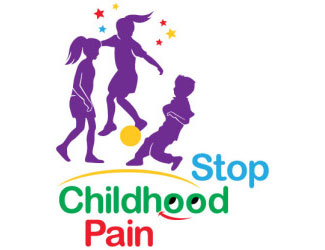Sympathetic blocks, nerve blocks and epidurals
It was thought that since amplified pain runs through the autonomic, or sympathetic nerves, that blocking or numbing these nerves would be beneficial. Typically, the reason given is to reduce pain to allow for more intense physical therapy. People have attempted this with guanethidine, reserpine, lumbar, axillary or stellate ganglion blocks. It was recognized early on that these do not have lasting effects and in 273 patients treated with sympathetic blockade only 7% had good or lasting results. A Cochrane systematic review was unable to determine if sympathetic blocks were effective and found little evidence to support them as standard of care in the treatment of CRPS. Sympathetic blocks for fibromyalgia have been done unsuccessfully. Sympathetic blocks have not been studied in children and have significant risks. One of my patients had her liver lacerated when they did a lumbar block and it had to be surgically repaired. Many prominent pediatric anesthesiologists no longer recommend sympathetic blocks in children.
There have been very few studies of peripheral blocks in children with CRPS and all have only reported extremely short term outcomes (most 2 months), but have reported benefit. Side effects, including seizures, have been reported.
In a study of 55 adults, Guanethidine blocks only helped 10% of the patients and 34% had significant side effects.
In lieu of blockade, some physicians will instill agents in the spinal fluid (epidural infusions). There have been no systematic studies of this in adults or children and there have been significant side effects reported including abscesses and sepsis in children.
It has been argued that since most children do well with conventional therapies (exercise therapy and counseling) invasive therapies should be avoided.
Possible side effects depend on the agent used and the location of the procedure.
- Veldman PH, Reynen HM, Arntz IE, Goris RJ. Signs and symptoms of reflex sympathetic dystrophy: prospective study of 829 patients. Lancet 1993;342:1012-6.
- Buchta RM. Reflex sympathetic dystrophy in a 14-year-old female. Journal of Adolescent Health Care 1983;4:121-2.
- Kaplan R, Claudio M, Kepes E, Gu XF. Intravenous guanethidine in patients with reflex sympathetic dystrophy. Acta Anaesthesiologica Scandinavica 1996;40:1216-22.
- Cepeda MS, Carr DB, Lau J. Local anesthetic sympathetic blockade for complex regional pain syndrome. Cochrane Database of Systematic Reviews 2005:CD004598.
- Dadure C, Motais F, Ricard C, Raux O, Troncin R, Capdevila X. Continuous peripheral nerve blocks at home for treatment of recurrent complex regional pain syndrome I in children. Anesthesiology 2005;102:387-91.
- Martin DP, Bhalla T, Rehman S, Tobias JD. Successive multisite peripheral nerve catheters for treatment of complex regional pain syndrome type I. Pediatrics 2013;131:e323-6.
- Bredahl C, Kristensen AK, Christensen KS, Bredahl C, Kristensen AK, Christensen KS. Treatment of reflex dystrophy with continuous peripheral nerve block. Ugeskrift for Laeger 2007;169:59-60.
- Ahmed SU, Vallejo R, Hord ED. Seizures after a Bier block with clonidine and lidocaine. Anesthesia & Analgesia 2004;99:593-4
- Lundborg C, Dahm P, Nitescu P, Appelgren L, Curelaru I. Clinical experience using intrathecal (IT) bupivacaine infusion in three patients with complex regional pain syndrome type I (CRPS-I). Acta Anaesthesiologica Scandinavica 1999;43:667-78.
- Ingelmo PM, Marino G, Fumagalli R. Sepsis after epidural catheterization in a child with chronic regional pain syndrome type I. Paediatric Anaesthesia 2005;15:623-4.
- Lin YC, Greco C. Epidural abscess following epidural analgesia in pediatric patients. Paediatric Anaesthesia 2005;15:767-70.
- Wilder RT. Management of pediatric patients with complex regional pain syndrome. Clinical Journal of Pain 2006;22:443-8.
- Zernikow B, Dobe M, Hirschfeld G, Blankenburg M, Reuther M, Maier C. [Please don’t hurt me!: a plea against invasive procedures in children and adolescents with complex regional pain syndrome (CRPS)]. Der Schmerz 2012;26:389-95.
